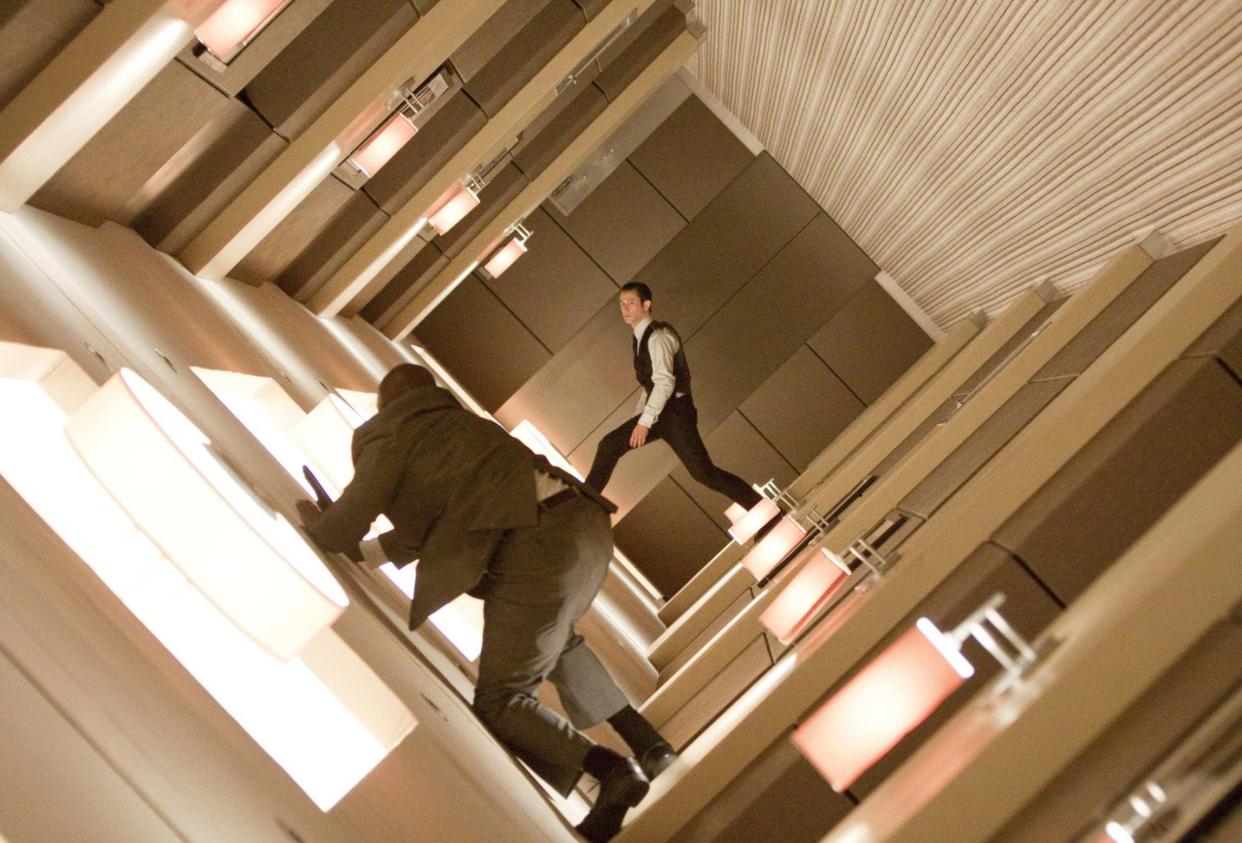A decade after Inception made lucid dreaming cool, I’ve been using the technique to escape the nightmare of lockdown

A decade ago, Christopher Nolan’s sleeper hit Inception wowed audiences with its brain-twisting story of a crew of mercenaries hired to hack into the dreams of corporate fat cats and steal industrial secrets. Featuring jaw-dropping special effects, mind-boggling action and an A-list cast led by Leonardo DiCaprio, it’s gone on to become a classic sci-fi thriller.
Its return to streaming channels and cinemas has me excited, not because it’s a brilliant film, which it is, but because its original release in the summer of 2010 marked a watershed moment for me. It was the first time I was able to describe to people what I had been doing at night since I was a child and had learned to practise again as an adult. No, not performing elaborate heists inside the minds of sleeping CEOs. But like Leo and co, I was lucid dreaming. I was waking up within the dream state too and finally Hollywood had produced a handy explainer.
Unlike the film’s protagonists, I didn’t need a fancy bit of tech and an Edith Piaf song to trigger the lucid state. I learned the hard way, using tried, tested and scientifically proven induction methods to train myself to recognise a dream when I’m in one. From Mild to Wilds, there’s a smorgasbord of acronyms for techniques you can use – all of which require practice and lots of patience. I won’t go into the details, fascinating and potentially life-changing as they are, but once you’ve experienced a lucid dream, no matter how brief, you’re left wanting more.
Unlike a “normal” dream, the lucid state is hyper-real and vivid. Surfaces and objects feel real to the touch. Even time is in sync with the waking world – a detail which Inception slipped up on. You’re alert and aware, and can influence the dream's narrative, characters and environment. At first, the sudden rush of realisation that you are lucid can cause you to wake up prematurely. But as you become more familiar with the lucid dream state, you learn to prolong the experience. You discover the laws of the physical world do not apply there and what you choose to do while lucid is really only limited by your imagination. Like in the movie, you can manipulate the dreamscape, turn the world upside down if you so wish, change an apple to an orange, walk through walls, conjure your favourite dessert or fly into space.
That doesn’t mean you have total control of the dream, though. As lucid dream expert Robert Waggoner explains: “No sailor controls the sea … Similarly, no lucid dreamer controls the dream … we lucid dreamers direct our perceptual awareness within the larger state of dreaming.” And unlike the film, this is your mind, no one else’s, and there is no scientific evidence to suggest people are able to share the dream, let alone collectively infiltrate another’s unconscious mind. Nevertheless it can be a profound experience and for some dreamers it’s become a quest to gain a greater understanding of consciousness itself or even spiritual awakening.
But no matter how deep you choose to go down the rabbit hole, lucid dreaming is bloody great fun. And that’s not a bad thing when a pandemic forces you to lock down in your homes for months on end and kiss goodbye to a life of international holidays, dancing in a crowded club or, heaven forbid, talking loudly or singing in groups. Unsurprisingly, the abrupt and traumatic turn of events in 2020 led to people experiencing a tsunami of strange and sometimes disturbing dreams. While many bemoaned their lockdown dreams, I welcomed them.
It was an opportunity to escape my reality: trapped, working from home with my husband and two very small children in need of constant attention. Extreme stress and anxiety led to nightmares and panic attacks which would wake me in a sweat, heart racing and struggling to breathe. Lucid dreaming helped me to face the shadows in my dreams instead of running away from them.
I’ve learned to literally face my “demons”. So a knife-wielding madman in one nightmare became a kind friend after overcoming my fear and embracing him. In another dream I was able to part the dark, nefarious storm clouds which were causing me emotional distress to reveal the bright, warming sun – simply by willing it to happen. Studies into lucid dreaming’s application in helping people cope with nightmares corroborates mine and others’ experiences. Researchers also see its potential in therapy of PTSD sufferers.
While lockdown restrictions have eased and life has returned to a sort of normal, my nightmares have also dissipated. Yet I am still left feeling restless about the future, with little to really look forward to. When the waking world has become a prison of isolation, social distancing and germaphobia, lucid dreaming is a little slice of freedom. In that brief period of lucidity I can take flight, Superman-style if I wish, and enjoy the pleasures of a life once lived, as well as one only imagined. And if that world becomes too small as well, then I’ll rewatch Inception and call on Tom Hardy’s character Eames for inspiration: “You musn’t be afraid to dream a little bigger darling.”
Read more
Is Tenet a sequel to Inception? Farfetched theory explained
Michael Caine once revealed truth about final scene of Inception

 Yahoo News
Yahoo News 
